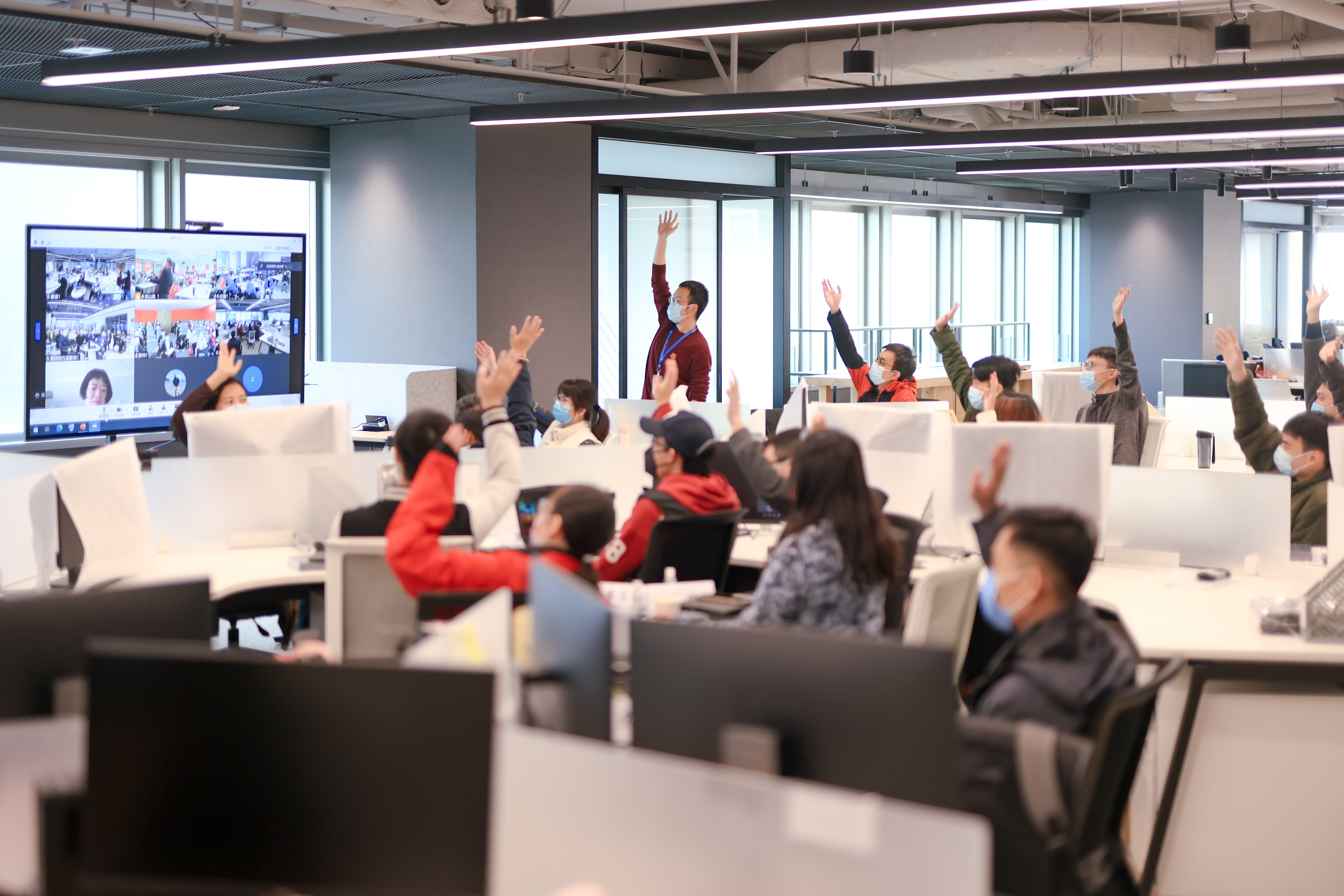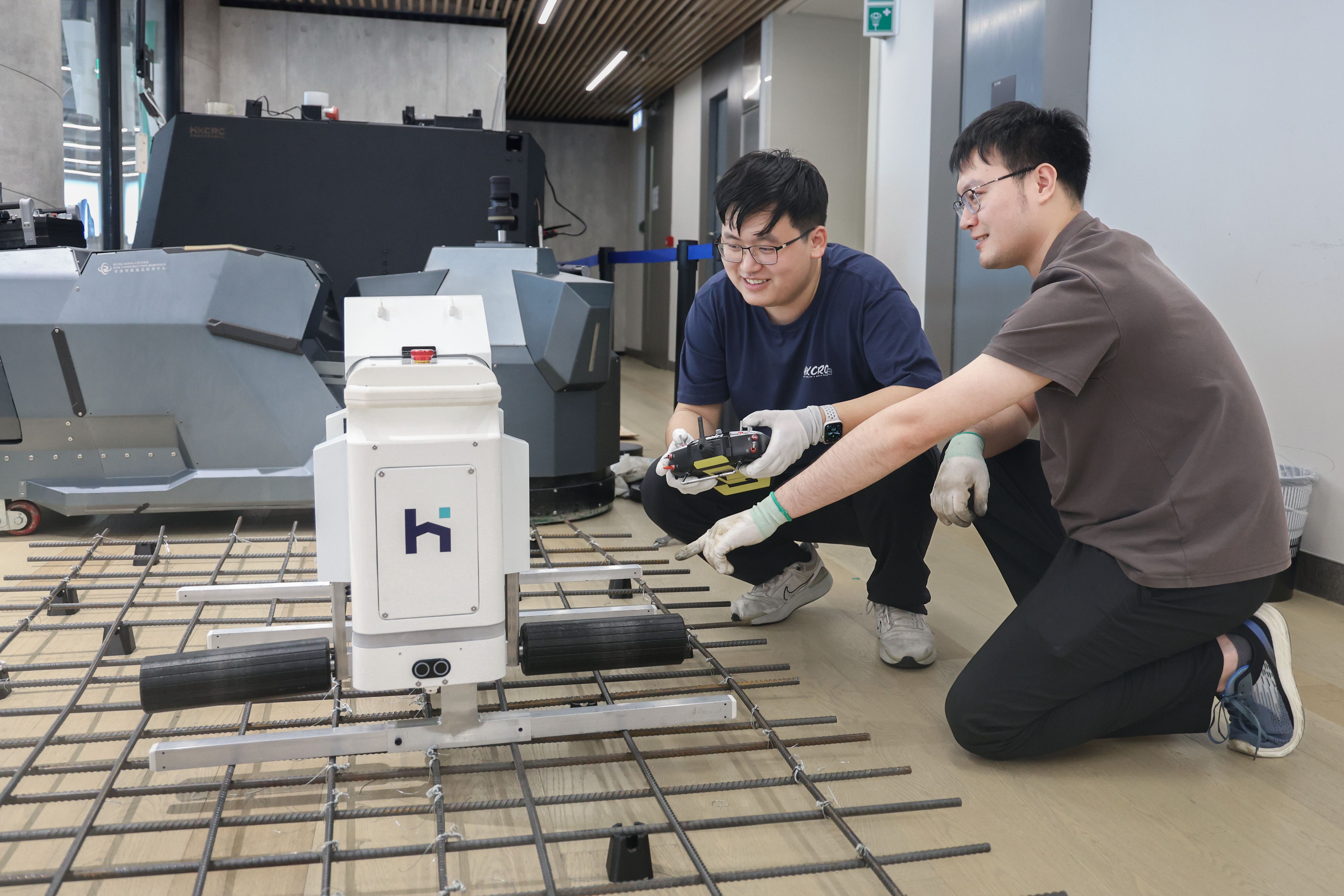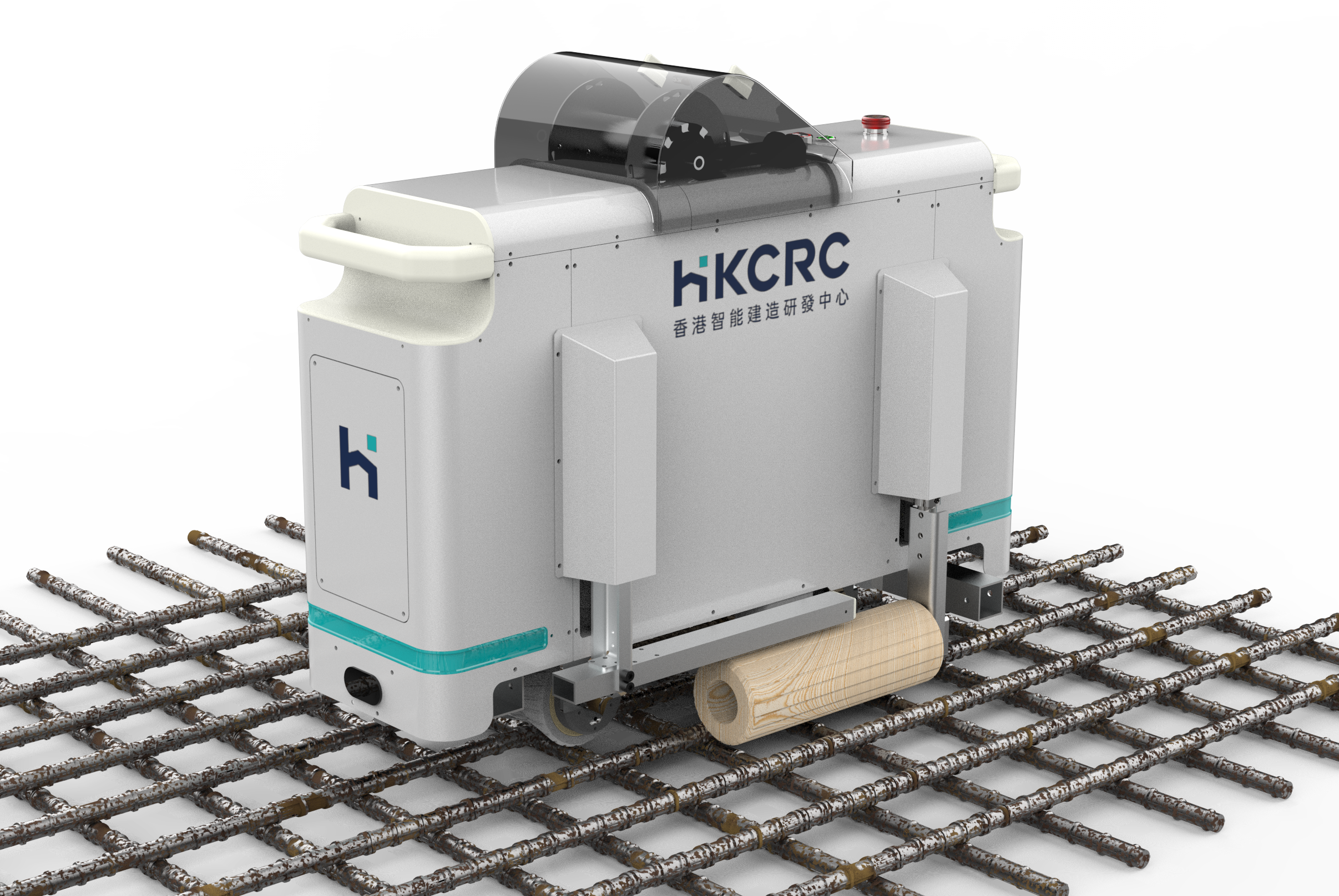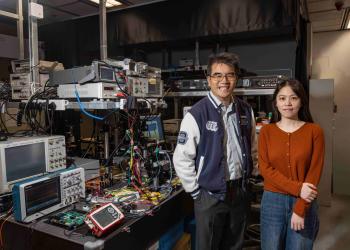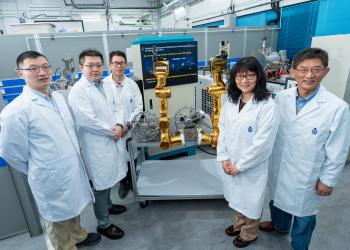Rebar Tying Robot – A Knowledge Transfer Odyssey from HKUST to the GBA
Created by HKUST MPhil student LI Haozhen and his team with the guidance of Dr. LIANG Haobo, Associate Director of the University’s Hong Kong Center for Construction Robotics (HKCRC), the rebar tying robot is one of the University’s four Gold Medal with Congratulations of the Jury winners at the 49th International Exhibition of Inventions Geneva held this April. The world-renowned inventions event saw the University scaling new heights with a record-breaking 36 winning projects.
On the surface, the robot may not look like it is from a sci-fi blockbuster because of its modest facade. Yet it is the fruit of collaboration between HKUST researchers and the construction industry in the Greater Bay Area (GBA), with the lofty aim of elevating construction efficiency through work automation.
Spearheading the project, Haozhen, now in his final year, has found his muse through the University’s signature Individualized Interdisciplinary Program (IIP) offered by the Academy of Interdisciplinary Studies. Under the supervision of Prof. LI Zexiang — an internationally acclaimed scholar in robotics from the University’s Department of Electronic and Computer Engineering, he can make deft use of the University’s bountiful resources through a highly flexible curriculum centering on intelligent construction and robotics.
Unleashing that inner entrepreneur
“The construction industry has been mostly adopting traditional construction methods over its centuries-long history, prompting me to think of new ways to realize smart construction,” said Haozhen, when asked how the IIP has led him to creating the robot. “However, I wouldn’t have been able to fulfill my goal under the traditional postgraduate program, where I would have been mainly churning out papers, instead of actually creating an invention with my own hands,” added Haozhen, whose dream is to become a researcher-turned-entrepreneur someday.
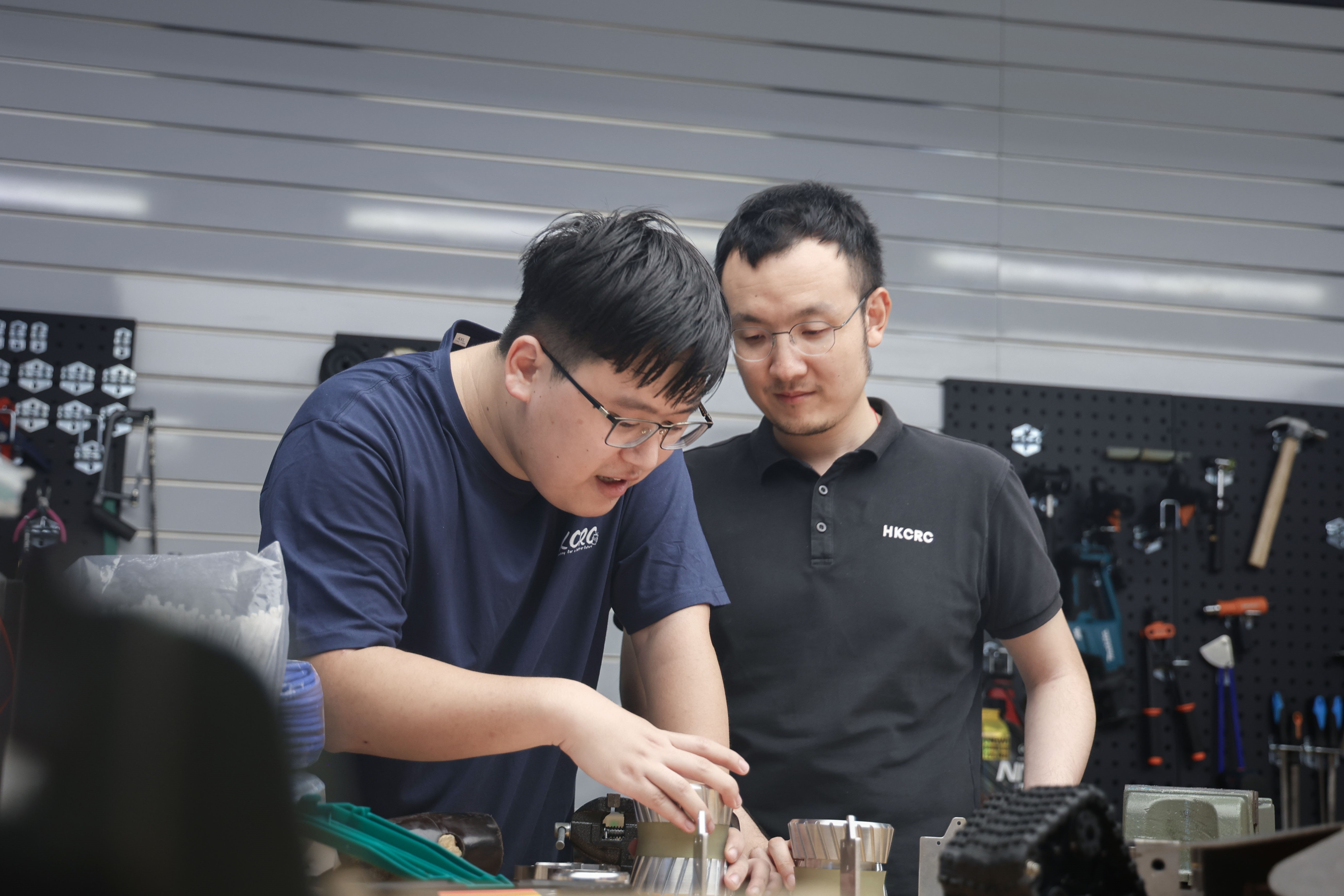
The rebar tying robot serves as the first stepping stone to the fulfillment of his ultimate pursuit. Elevating productivity for the construction industry, the fully automated robot is capable of tying one node in just five seconds, a speed three to four times faster than its human counterpart in terms of one day’s net efficiency.
But will the robot steal construction jobs? Li believes otherwise. “It is not going to replace human workers, but instead help them boost their performance. It will also relieve them from their physically demanding work, which will help enhance work safety,” he said.
North stars enlighten budding innovators
Haozhen attributed his newfound success to the solid support provided by the HKCRC. His mentor Dr. Liang Haobo has been one of the North star figures guiding Haozhen’s research voyage across robotics and invention commercialization.
Having spent a decade at HKUST — from studying for his postgraduate degree to becoming a mentor to MPhil students — Dr. Liang has witnessed the birth of many nascent entrepreneurs from the University’s innovation and technology (I&T) ecosystem, including Haozhen.
“HKCRC gathered researchers of diverse academic backgrounds, who can readily share their expertise to provide the technical know-how. Thus it is more about design thinking and business acumen that we aim to nurture in our students,” Dr. Liang said.
Through the University’s expansive industry network in the GBA, the robot has undergone testing at construction sites in both Hong Kong and Shenzhen over the past months. Dr. Liang said the research team is keen to contribute to knowledge transfer from Hong Kong to the GBA, constituting a win-win situation. “Hong Kong has a solid research base and can serve as a window into overseas markets, while the GBA has a well-established supply chain for speedy and economical manufacturing,” he explained.
Haozhen said he is speeding up on product upgrades and aims to launch the robot this fourth quarter – taking him another step closer to satisfying his entrepreneurship dream.
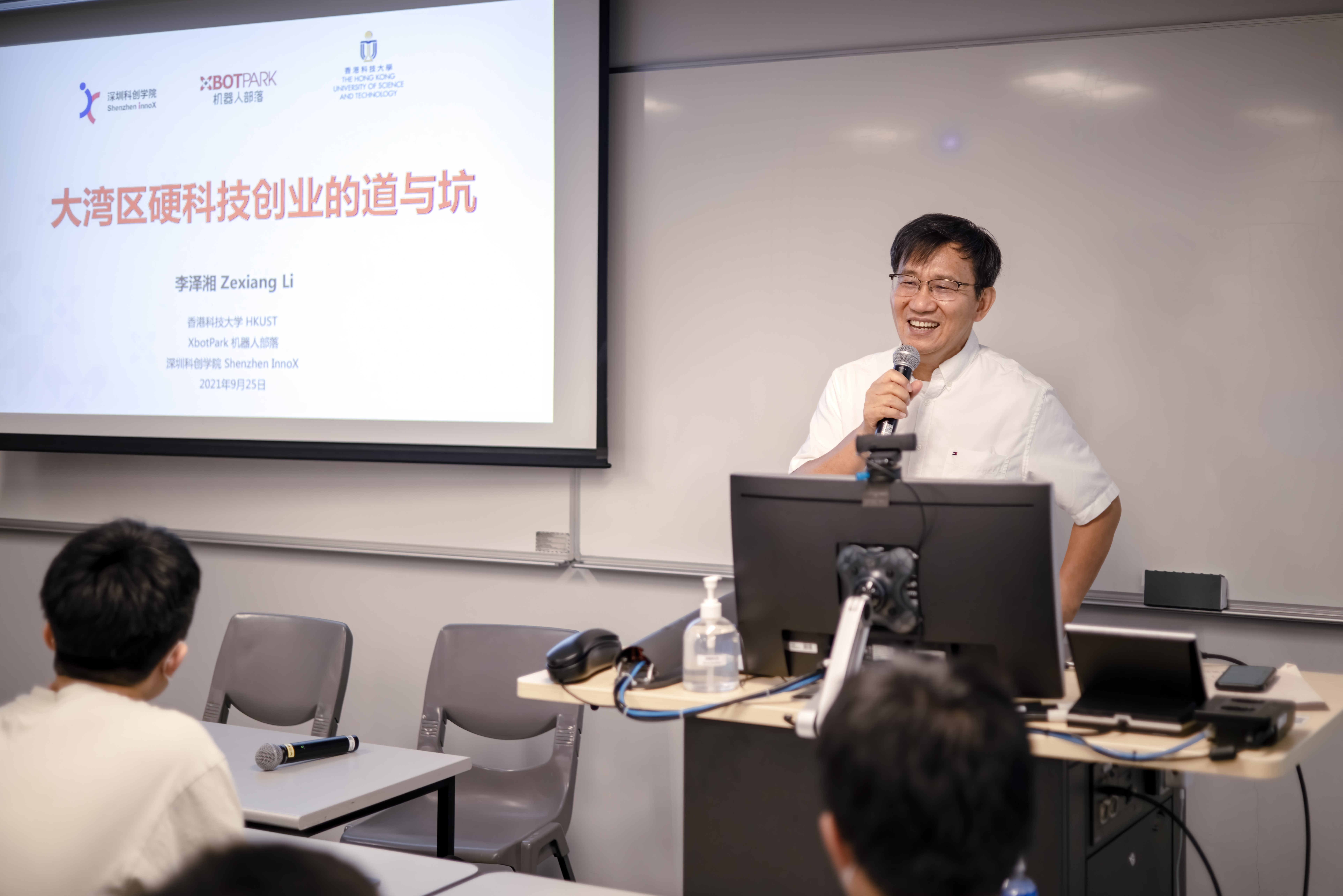
A 70-strong family tree
“Since my PhD studies, I have observed that many senior students embarked on the path of entrepreneurship, creating an encouraging atmosphere for me,” Dr. Liang said. He recalled that a valuable opportunity arose when Prof. LI Zexiang established the HKCRC four years ago.
“I had always wanted to do something different, even though I was completely new to establishing and running a research center.” he reminisced. “Looking back, all those challenges became trivial as I have overcome them. What matters lies in the future,” he mused.
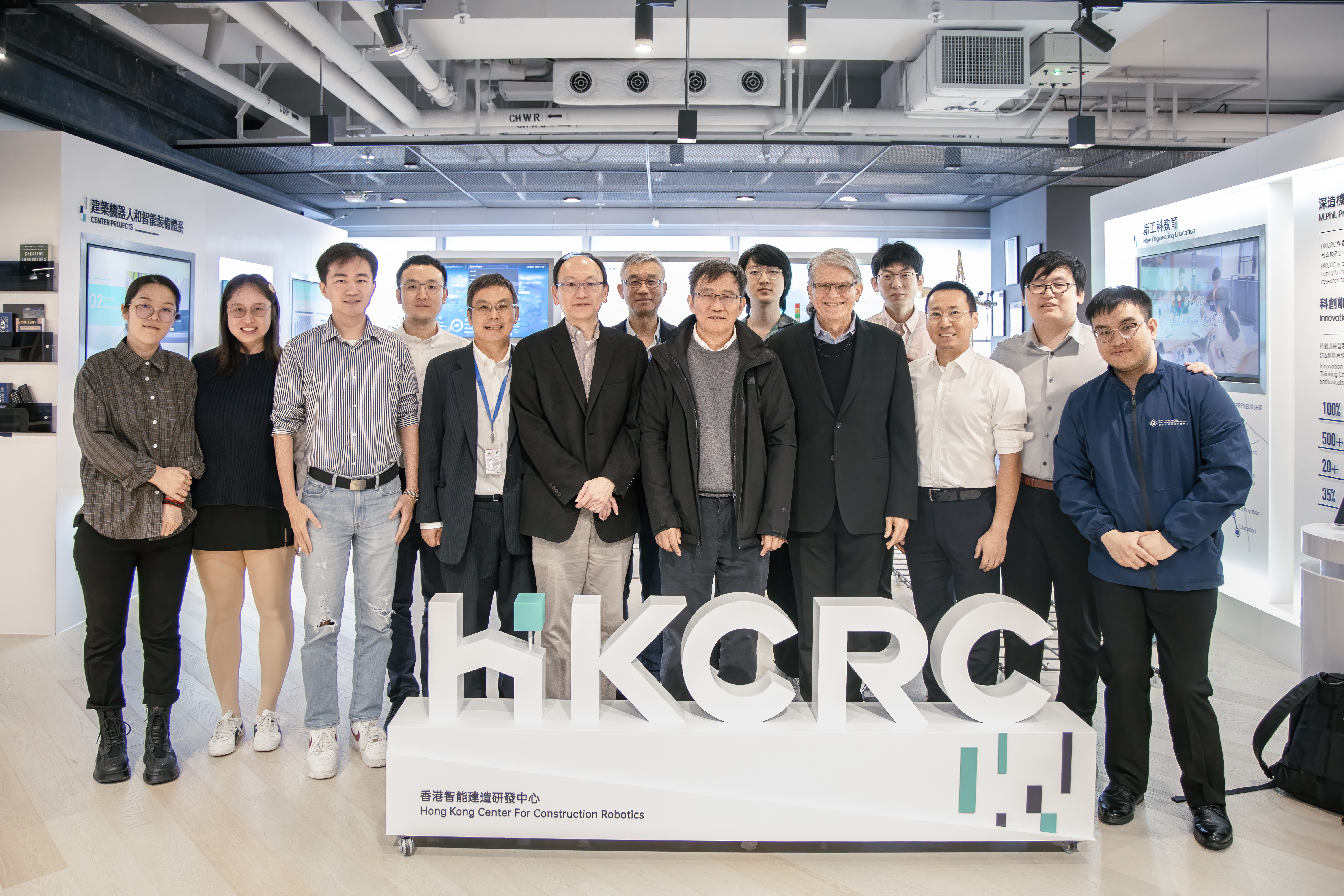
The HKCRC has now proliferated into a family tree of over 70 members with diverse backgrounds, who are working on over 10 research projects with the collective aim of instigating change to the construction industry.
Looking ahead, Haozhen will obtain his MPhil degree later this year. Yet the two believe the teacher-student rapport is built to last beyond his graduation – much like the rebar tying robot.
“Research is a long-term process that involves a cycle of spotting a problem and then resolving it. I don’t see our relationship as teacher and student, but as a family working towards a shared goal through this process,” concluded Dr. Liang.
